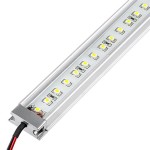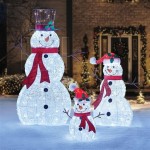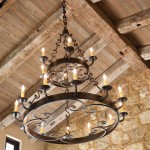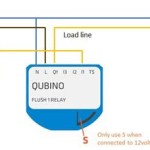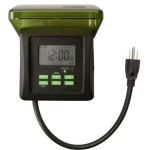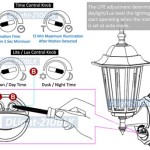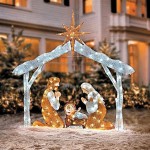How to Choose Outdoor Flood Lights
Outdoor flood lights provide a versatile solution for illuminating various outdoor spaces, from driveways and patios to gardens and security zones. Choosing the right flood lights requires careful consideration of several factors to ensure effective illumination, energy efficiency, and aesthetic appeal. This article will guide you through the key aspects to consider when selecting outdoor flood lights for your needs.
1. Purpose and Application
The primary function of your flood lights will dictate the type and features you require. Consider the following:
- Security Lighting: For security purposes, motion-activated flood lights with a wide beam angle and bright lumens are recommended. These lights deter intruders by illuminating potential entry points and alerting residents of activity.
- Architectural Lighting: To accentuate architectural features or create an ambiance, consider using flood lights with adjustable beam angles and warm white light temperatures. This allows you to highlight specific areas or create a soft, inviting glow.
- Task Lighting: For illuminating specific tasks like outdoor dining or working in a garden, flood lights with adjustable beam angles and neutral white light temperatures are ideal. This provides clear visibility for the task at hand.
- Landscape Lighting: For showcasing landscaping features, flood lights with a combination of beam angles and color temperatures can be used. This allows you to highlight trees, bushes, sculptures, or other elements in a visually appealing manner.
2. Brightness and Lumens
The brightness of flood lights is measured in lumens. The number of lumens required depends on the size of the area you want to illuminate and the desired brightness level. Here's a general guideline:
- Small areas (up to 100 square feet): 500-1000 lumens
- Medium areas (100-500 square feet): 1000-2000 lumens
- Large areas (over 500 square feet): 2000+ lumens
For security purposes, brighter lights are generally recommended. For architectural or landscape lighting, consider the desired ambiance and select a brightness level that enhances the aesthetic appeal without being overly harsh.
3. Light Color Temperature
Light color temperature is measured in Kelvin (K) and affects the appearance of the illuminated area. Here's a breakdown of common color temperatures:
- Warm White (2700-3000K): Creates a cozy, inviting atmosphere, ideal for residential areas.
- Neutral White (3500-4500K): Provides a clean, bright light, suitable for task lighting and security purposes.
- Cool White (5000-6500K): Emits a crisp, daylight-like light, often used in commercial settings or for security applications.
Choose a color temperature based on the intended use and aesthetic preferences. For security, cool white light is typically preferred for its visibility. Residential applications often favor warm white for a welcoming ambiance.
4. Beam Angle and Spread
The beam angle determines the spread of light. Flood lights come in various beam angles, from narrow to wide, each suited for different applications:
- Narrow Beam (<30 degrees): Ideal for highlighting specific areas, such as architectural features or sculptures.
- Medium Beam (30-60 degrees): Suitable for illuminating larger areas, like patios or driveways.
- Wide Beam (>60 degrees): Effective for broad, general illumination of large spaces, like parking lots or security zones.
Consider the size and shape of the area you want to illuminate and choose a beam angle that provides adequate coverage without creating unwanted glare.
5. Installation and Mounting
Flood lights can be mounted in various ways, including:
- Wall Mount: Suitable for illuminating walls, fences, or structures, offering flexibility in positioning.
- Ground Mount: Ideal for illuminating large areas, offering broad coverage and stability.
- Pole Mount: Used for high-level lighting and increased visibility, often found in parking lots or streets.
Choose the mounting method that best suits your needs and the specific location of the floodlights. Consider factors like accessibility, visibility, and aesthetics.
6. Energy Efficiency and Features
Modern flood lights offer energy efficiency features to reduce electricity consumption and save money on utility bills. Look for features like:
- LED Technology: LED bulbs are highly energy-efficient compared to traditional incandescent or halogen bulbs, offering significant long-term savings.
- Motion Sensors: Activate the floodlights only when motion is detected, reducing energy consumption when not in use.
- Dimmable Options: Allow you to adjust the brightness level for specific applications, further reducing energy usage.
- Weatherproof Ratings: Ensure the flood lights are rated for outdoor use and can withstand harsh weather conditions.
Investing in energy-efficient flood lights with advanced features can significantly reduce your energy footprint while enhancing performance and functionality.
By considering the factors outlined above, you can make informed decisions when choosing outdoor flood lights that effectively illuminate your outdoor spaces, meet your specific needs, and enhance the overall aesthetics and security of your property.

Led Flood Lights What You Need To Know

Led Flood Lights What You Need To Know

How To Choose The Best Led Outdoor Flood Lights

How To Choose Outdoor Led Flood Lights For Your Landscape Mic

How To Choose The Right Outdoor Led Flood Light

How Can You Choose The Best Led Floodlights Mklights

Led Flood Light Choose The Ideal Outdoor Lighting Fixture Ledmyplace

How To Choose A Good Outdoor Led Flood Light Blog Yaham Lighting

12 Tips To Select The Best Outdoor Led Flood Lights And Manufacturers

Ultimate Guide To Flood Lights Lighting Style
